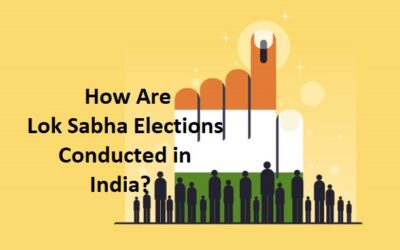100 Most Expected NTSE 2022 Geography Questions – II
NTSE 2022 Geography questions will help you to prepare and check your preparations. Solve these NTSE 2022 Geography questions in one sitting. NTSE 2022 popularly known as National Talent Search Examination is a prestigious National-Level exam. It is conducted by NCERT (National Council of Educational Research and Training) for class X students. It is conducted once in a year in two different stages. NTSE- 2022 Stage I exam will be a state level exam and will be conducted by all the states and Union Territories of India. The students who will clear stage I exam will qualify for stage II.
Stage-II will be a National level Exam. The students who will clear both the Stages will be eligible to receive the Scholarship. The scholarship will be given on the basis of the overall performance of students in Stage-I and Stage-II. The application form for this exam will be filled in online mode whereas the NTSE 2022 examination will be held in offline mode. https://ncert.nic.in/national-talent-examination.php
NTSE – 2022 Exam Overview
Name of Examination : National Talent Search Examination 2022
Conducting Authority: NCERT (National Council of Education Research and Training)
Mode of Application: Online
Duration of Exam : 120 minutes / 2 Hrs. (For each stage)
Question Type : Objective (MCQ’s)
Number of Questions In Stage 1: (200 Questions)
Number of Questions In Stage 2: (200 Questions)
No. of sections: 2 (Mental Ability Test and Scholastic Ability Test
NTSE – 2022 GEOGRAPHY SYLLABUS
If you are preparing for NTSE – 2022, you must be aware of the syllabus. Geography syllabus is given below.
For Geography NTSE 2022 questions from classes VI to VIII, Click on the given link.
Class IX – X:
India and its Neighbors, Natural Vegetation, Population, Resources and Development, Water Resources, Agriculture.
100 Most Expected Geography Questions For NTSE 2022 Preparation
Chapter 1 – India and its Neighbors
1 The southernmost point of the Indian union which got submerged under the sea water in 2004 during Tsunami is
a) Lakshadweep
b) Cape Comorin
c) Indira point
d) Kavaratti.
2. Before the opening of Suez canal, European sailors used to visit India through _____________.
a) Red sea
b) Cape of Good Hope
c) Gulf of Mannar
d) Mediterranean sea.
3. What separates India from Sri Lanka.
a) Palk strait.
b) Gulf of Kutchch
c) Medagascar islands
d) Indira point.
4. Maldives islands are situated to the south of the _______________islands.
a) Lakshadweep
b) Andaman and Nicobar
c) Sri Lanka
d) Kerala
5. Which country is not the part of the Indian subcontinent?
a) Nepal
b) Bhutan
c) China
d) Maldives
6. India is called a subcontinent because of
a) it’s vast size.
b) it’s distinct culture.
c) physical features
d) all of these.
7. Which part of India is considered to be a peninsula?
a) Eastern
b) Western
c) Northern
d) Southern
8. The Tropic of cancer passes through how many states?
a) six
b) seven
c) eight
d) nine
9. If Karakoram and Zaskar are Himalayan ranges, then what are K2 and Kanchenjunga.
a) Highest ranges.
b) High peaks
c) Mountains.
d) Glaciers.
10. Which of the following is the oldest route of contact between India and other countries of the world?
a) Land routes
b) Ocean routes
c) rivers
d) Himalayan pass
11. 97°25′ Longitude is the _______________ longitude of India.
a) Easternmost
b) Westernmost
c) Northernmost
d) Southernmost
12. India’s total area accounts for about _______ per cent of the total geographical area of the world.
a) 4.28
b) 3.8
c) 2.4
d) 1.4
13. Which is the Highest range of Himalayas?
a) Mt. Everest.
b) Himadri
c) Annamalai
d) Nilgiri.
14. Which neighboring country lies to the east of India?
a) Myanmar
b) Bhutan
c) Bangladesh
d) Afghanistan
15. Before 1947, there were two types of states in India – the provinces and the Princely states. Princely states were ruled by ___________.
a) local hereditary rulers.
b) British officials
c) Viceroy
d) Chief Ministers.
100 Most Expected NTSE 2022 Geography Questions – II
Chapter 2 – Natural Vegetation
1) Our country India is one of the ________ mega bio-diversity countries of the world.
a) Eighth
b) Tenth
c) Twelfth
d) Fourteenth
2. Which is a non-flowering plant in India?
a) Ferns
b) Algae
c) Fungi
d) All of these.
3. The virgin vegetation, which are purely Indian are known as _________________ species.
a) endemic
b) exotic
c) Virgin
d) flora and fauna.
4. The variation in duration of sunlight at different places is due to differences in ________________ .
a) latitude
b) altitude
c) season
d) all of these.
5. According to India State of Forest Report 2011, the forest cover in India is ______________ per cent.
a) 12.5%
b) 21.05
c) 27.5%
d) 33%
6. Tropical evergreen forests appear green all the year round because _______________ .
a) trees are very tall.
b) sunlight cannot enter in the forest.
c) soil is very fertile.
d) There is no definite time for trees to shed their leaves.
7. Teak, Bamboos, sal, shisham, sandalwood and khair are commercially important trees of which forest?
a) Tropical rain forests.
b) Tropical Deciduous forests.
c) Mangrove forests.
d) Thorn forests.
8. Sarpgandha, a plant only found in India is used to treat ______________ .
a) Asthma
b) Blood pressure
c) Cancer
d) Diabetes.
9. Wildlife Protection Act was implemented in _______________ in India.
a) 1965
b) 1969
c) 1972
d) 1975
10. The natural habitat of the Indian lion is the ____________ forest in Gujarat.
a) Rann of Kachchh
b) Sundarbans.
c) Bharatpur
d) Gir
Q 11. Ebony, mahogany and rosewood trees are grown in which type of the forests?
a) Coniferous forest
b) Tropical rainforest
c) Tropical thorn forest
d) None of these.
Q 12. Why is the southern slopes in Himalayan region covered with thick vegetation?
a) On account of more exposure to sunlight
b) On account of more precipitation
c) On account of less exposure to colder winds
d) All the above
Q 13. Assertion (A) : Vegetation os the index of climate.
Reason (R) : Rainfall and temperature predominantly affect the type of vegetation.
a) Both A and R are true and R is the correct explanation of A.
b) Both A and R are true but R is not the correct explanation of A.
c) A is true but R is false.
d) A is false but R is true.
Q14. Why the trees in the equatorial rain forests tall?
a) Due to high temperature and abundant rainfall.
b) Trees also grow with rapid speed to get maximum sunlight in this region.
c) Hot and humid climate support the growth of a variety of trees.
d) All the above.
Q 15. Which place in India is famous for migratory birds (Flamingo) during the winter season.
a) Sundarbans.
b) Ganga – Brahmaputra Plains.
c) Rann of Kachchh.
d) Thar desert.
100 Most Expected NTSE 2022 Geography Questions – II
Chapter 3 – Population
Q1. India’s population as on March 2001 stood at 1,028 million. It accounts for_________
A. 16.7 per cent of the world’s population
B. 17.6 per cent of the world’s population
C. 21.7 per cent of the world’s population
D. 22.3 per cent of the world’s population
Q2. The 2001 Census data reveals that __________with a population size of __________ million people is the most populous state of India.
A. Bihar, 143
B. West Bengal, 151
C. Uttar Pradesh, 166
D. Kerala, 105
Q3. . In India the first census was held in the year _______________.
A. 1851
B. 1872
C. 1882
D. 1901
Q4. Which two countries are more densely populated than India?
A. Japan and Nepal.
B. Bangladesh and Pakistan.
C. Pakistan and Sri Lanka.
D. Japan and Bangladesh.
Q5. Internal migration does not change _______________
A. The size of population.
B. Distribution of population.
C. Sex ratio.
D. Density of population.
Q6. Which state or Union Territory, has a favorable sex ratio.
A. Delhi.
B. Pondicherry.
C. Tamil Nadu.
D. Rajasthan.
Q7. _______________ activities include transport, communications, commerce, administration and other services.
A. Primary.
B. Secondary.
C. Tertiary.
D. None of the above.
Q8. To be a literate in India, according to census 2001, a person should be ____________
A. five years and above who can read and write with understanding in any language.
B. Seven years and above who can read and write with understanding in any language.
C. Should be able to read and write Hindi and English.
D. Fourteen years and above who can read and write with understanding in any language.
Q9. Which state has the lowest population?
A. Rajasthan.
B. Arunachal Pradesh.
C. Sikkim
D. Nagaland.
Q 10. Which state in India has the highest density of population as per 2011 census.
A. Bihar
B. West Bengal
C. Uttar Pradesh.
D. Kerala.
100 Most Expected NTSE 2022 Geography Questions – II
Chapter 4 Resources and Development
1. Which one of the following statements is true about the term resources?
(a) Resources are free gifts of nature.
(b) They are the functions of human activities.
(c) All those things which are found in nature.
(d) Things which cannot be used to fulfill our needs.
2. Under which of the following type of resource can wood be put?
(a) Biotic
(b) Renewable
(c) Non-Renewable
(d) Stock
3. Land left without cultivation for more than five agricultural years is called
(a) Cultural waste land
(b) Current fallow land
(c) Waste land
(d) Barren land
4. Which factor is not responsible for Global ecological crisis?
(a) Depletion of resources for satisfying the greed of few individuals.
(b) Accumulation of resources in few hands.
(c) Sustainable economic development.
(d) Indiscriminate exploitation of resources.
5. Mountains account for ____________ percent of the total surface area of the country.
(a) 17%
(b) 27%
(c) 30%
(d) 43%
Q 6. For stabilization of desert and sand dunes, ____________have contributed significantly.
(a) Contour Ploughing
(b) Terrace farming
(c) Strip cropping
(d) Shelter belts
Q7. In the question given below, there are two statements marked as Assertion (A) and Reason (R). Read the statements and choose the correct option
Assertion (A) : Laterite soils are formed in the areas of High temperature and heavy rainfall.
Reason (R) : High amount of rainfall results in leaching of soluble minerals and silica.
Options:
A. Both A and R are true and R is the correct explanation of A.
B. Both A and R are true and R is not the correct explanation of A.
C. A is true but B is false.
D. A is false but R is true.
Q8. Which of the following statements regarding red soils of India is/are correct?
I) The colour of the soil is red due to diffusion of iron content.
II. Red soils look yellow when it occurs in hydrated form.
III. This type of soil is spread over North-west Deccan plateau and is made up of lava flows.
IV. Most of the Red soils have come into existence due to weathering of ancient crystalline Igneous rocks.
Select the correct answer using the codes given.
A. i and II Only
B. I , II and III Only
C. I, II and IV Only
D. II, III and IV Only.





0 Comments